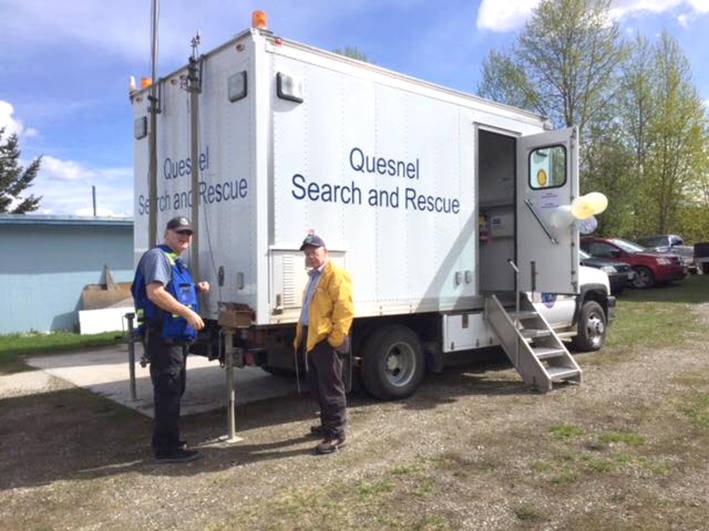Ken Alexander
Observer Reporter
Quesnel Search &Rescue (QSAR) hosted an Open House at its headquarters across from Ceal Tingley Park on May 6, but the weather may have had a cooling effect on the turnout.
However, members of the public had the opportunity to meet the QSAR team members, tour the headquarters and check out the command truck.
They also got to check out the various discipline stations to get an idea of what the QSAR does during a rescue and the training programs.
The stations included ground search and rescue; tracking; winter survival (avalanche and snowmobile rescue); what to pack for overnight winter survival; Adventure Smart - a public information program (Hug A Tree); a slide show; radio communication, swift water rescue; rope systems; and first aid.
QSAR president Bob Zimmerman says the event was all about community awareness and volunteer recruitment.
“It went well. We got five new applicants who are interested in getting involved.
“The weather conditions the day before and off-and-on the day of the event. I think it certainly cut down on the number of people we were hoping would tour the property.
“But, we were happy it went over well. Everything that was held outside, we just put a pop-up tent over them.
It’s good for people to know what we do, he says, adding then they know how we help people and what scenarios we can deal with.”
Zimmerman notes QSAR has been around enough years that its members are basically trained for every venue that’s out there, but they are not trained for helicopter long-line rescue.
“There’s a team being prepared in Prince George that will do mutual aid throughout the North.”
However, with the Quesnel and Fraser rivers in the coverage area, he says local members are trained in swift-water rescue and they have rope-rescue trained people, as well as trackers, which is the basic starting point.
“It seems to us that if we’re looking for someone who is missing, we’re searching the roads - they may have slid off the road and got stuck.
“It could be people who are injured in the bush that we have to go in and help them out to where the ambulance can take them away.”
He adds the hunter-getting-lost-walking-in-the-bush scenario doesn’t happen as much any more because there’s so much in satellite imagery tools and GPS available that people can use to avoid getting lost.
He notes the Quesnel Community Foundation gave QSAR a donation so 10 GPS units could be purchased to assist in searches.
Zimmerman says they average around one callout a month. He adds some times there are more and sometimes there are fewer.
QSAR also provides mutual aid to 100 Mile House Williams Lake, the Chilcotin, Prince George and Vanderhoof, as long as the Quesnel search area can be covered while we’re out of town.
“The whole North works that way. We started it years ago with mutual aid.
“In the North, we’re smaller groups and we tend to co-operate much as possible.
Zimmerman says there is a new rope-rescue manual that’s expected to come out at the end of the month for Search and Rescue groups around the province.
He adds folks who join Quesnel Search and Rescue have to take is a 72-hour course that was developed years ago.
However, that instruction manual has also been updated and they are waiting for it to come out, but Zimmerman says he won’t know specifics of the new manual until he sees it. Meanwhile, Quesnel Search and Rescue members were called out for a river search on May 8.
Zimmerman says QSAR provided a swift-water response with two river boats and a ground support group.
